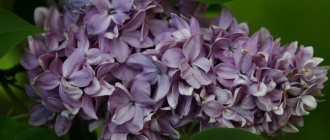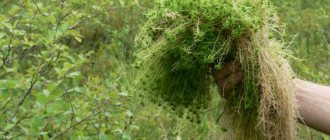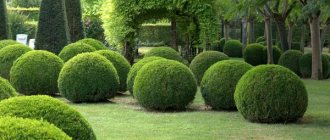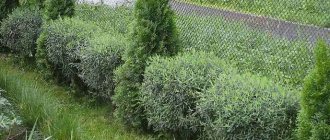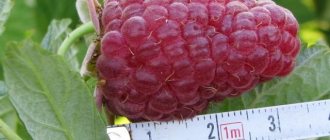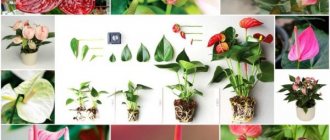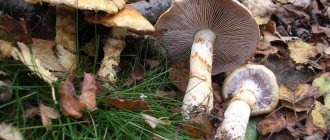3778
Domestic botany is famous for its centuries-old history. In the 19th century, the Imperial Academy of Sciences made a count and inventory of plants growing in our country and beyond. However, not all items were included in the main list. For example, the Ginnala maple received a description relatively recently, in 1860. It was then that the Russian scientist Karl Maksimovich brought it to the Botanical Garden of St. Petersburg from his next Far Eastern expedition. The royal court liked the shrub so much that they began to actively introduce it into landscape design.
Young foliage of Ginnala
Description of the plant
Ginnala maple, also known as river maple, is part of the Sapindaceae family and is a deciduous plant, often used to decorate gardens and streets. This tree cannot be called large, because its maximum height reaches 10 m, of which the trunk is only 25-35 cm. The trunk and branches are thin and straight. The bark has a gray tint. The leaves are unremarkable and turn orange or even red in autumn. The active growing season is from May to September and it is at this time that the shrub grows and develops most actively.
The Ginnala Maple blooms along with the leaves blooming, only 2-3 weeks. When flowering, small green-yellow flowers appear on the tree, which are collected in separate clusters. The fruits begin to develop only at the end of summer and are red in color.
As for the root system, the tree is superficial and branched, but very dense. It is thanks to its density that the ginnala maple is not at all afraid of strong winds.
Description
Let's look at the ginnal maple, description. Its other name is river maple. As you can see in the photo, this plant has a bushy form. The height can vary from 3 to 5 meters. Under natural conditions, this type of maple can be found in Southeast Asia. Ginnala also grows in our country. The date of breeding of the variety is 1860.
The crown is spreading, tent-shaped, wide and dense. There can be one or several trunks. Specimens with one trunk have a cone-shaped crown. The diameter can vary from 5 to 7 meters.
The shrub looks most impressive in autumn. The leaves first change color to yellow, then to orange, and then to fiery red.
The leaf blades are three-lobed. Their length can reach up to 8 cm.
The flowers are small, collected in panicles. Color – cream. They emit a fragrant aroma.
The fruits have an elongated shape, resembling wings in appearance. The length of the lionfish is approximately 3 cm. The color is quite decorative, the intensity and tone depend on the degree of lighting. The color scheme can be either green or red.
Maple grows quite quickly. It adds up to 0.25 m per year in all directions. The life span of the bush is more than a hundred years. The ginnala maple is a subspecies of the Tatarian maple.
Landing
In order for the plant to take root and begin to actively develop, it is necessary to carefully consider the main points associated with planting and care.
Boarding time
This tree, like most other plants, is planted in spring or autumn. The two best months are March and November.
The soil
Despite the fact that the soil does not play the most important role when planting ginnala maple, its choice should also be approached with great responsibility. Nutritious and vitamin-rich soil is best suited, and the reaction should be slightly acidic or neutral. In some cases, to equalize the acidity balance, it is necessary to add peat to the soil.
Landing location
The ginnala maple loves light very much, which means it must be planted in a sunny place, even in completely open sunny areas. It is the quality of lighting that affects the color of the foliage of a bush: the more sun there is, the richer the color will be in the fall. If the shade of the leaves does not play the most important role for you, then the tree will take root well in partial shade.
Well preparation
Not many people know, but it is best to prepare a planting hole for a maple tree in advance. This should be done 3-4 weeks before the plant is supposed to be planted in the ground. This is necessary so that the ginnal maple subsequently develops better.
Boarding procedure
In order to properly plant a ginnala maple, you must adhere to the following instructions:
- Prepare the hole. The approximate size of the pit should be 0.70/0.5/0.5. As a rule, in order for the maple to take root better, the excavated soil is mixed with humus (peat or compost) and river sand. If the ginnala maple is planted as a fence, then not a hole is dug, but a long trench.
- A seedling is placed in a hole in a vertical position, and the roots of the plant must be carefully straightened.
- The seedling is covered with specially prepared soil (a mixture of earth, humus and river sand). It is worth noting that the root collar should remain at ground level. The earth should be compacted a little.
- After planting is completed, the young seedling must be watered immediately.
- In order for the ginnal maple to take root, the place where its root system is located is covered with straw, sawdust, peat and any other warm material.
Growing technique
Caring for the plant is simple. Expert recommendations:
- During the season, a single watering is sufficient for the tree. Single dosage - 15-20 liters per plant. In dry summers, the frequency of the procedure can be increased up to 4 times a month.
- A day after watering, loosen the soil in the circle around the trunk. Depth - up to 7 cm.
- In the spring, starting from the 2nd year, the shrub first of all needs sanitary pruning. During the same period, you can form the desired shape from the crown.
- An adult maple tree does not need anything to overwinter. An annual seedling should be covered with spruce branches or non-woven fabric.
- The root neck especially requires protection.
Did you apply fertilizer when planting? Until the 3rd year of life, you don’t need to feed the maple anymore. If you didn’t add them, add the following preparations next spring:
- superphosphate - about 40 g per 1 sq. m;
- urea - 40 g per 1 sq. m;
- potassium salt - 20 g per 1 sq. m.
Attention! Powdery mildew and white spot are the main diseases of the Ginnala maple. They significantly spoil the appearance of the crown. Systemic fungicides will help get rid of pathogens.
Care
Caring for a ginnal maple is no different from the average caring for any tree or shrub.
We have collected all the rules in a separate table. Wood care procedures
| Procedure name | Description |
| Watering | The frequency of watering depends on weather conditions: if the air temperature is high, then you can water the shrub once or twice a week; under normal conditions, during the period of active growth, watering is carried out once a month. You need to fill in about 15 liters of water at a time. It is worth noting that after planting the tree, for a month, the ginnala maple needs to be watered once a week. |
| Fertilizer | If the tree was planted in fortified soil, then it does not require any fertilizers. But, if you begin to notice that the tree needs additional nutrition, then you can use urea, potassium salt or superphosphate. |
| Loosening | Loosening promotes active plant growth by allowing oxygen to reach its roots. The next day after planting, it is necessary to complete this procedure. |
| Trimming | Maple tolerates pruning very well. You can do this at your own discretion, but it is better not more than 2 times a year. It is recommended to choose a warm season for pruning. |
Benefit
It would seem, what use could there be of an ordinary tree? But the Ginnala maple is different here too:
- due to its decorative properties, this type of maple is often used in landscape design, and it serves both for decoration and for use;
- is an excellent honey plant, so beekeepers can consider planting it near the apiary (bees can collect more than 7-8 kg of honey from one maple tree);
- its fruits feed many species of birds and forest animals;
- Ginnala maple, as well as other types of maple, is used in folk medicine.
Reproduction
Maple propagation occurs in three main ways:
- By cuttings. The propagation procedure using cuttings is described in more detail above. It is only worth noting that the length of the cutting should be no more than 25 cm.
- Vaccination. The optimal time for vaccination is spring. This propagation method is used more often by experienced gardeners.
- Using seeds. Occurs in spring or autumn. The seeds must be well processed, placed in the refrigerator for 3 months, and then planted in open ground.
Use in landscape design
A hedge of low trees will look very good in any park or garden. Maple is quite suitable for a single-row hedge , if you use large bushes, and for a two-row, if you plant the bushes lower. In addition to a beautiful decorative effect, a hedge will serve as a good backdrop for compositions of flowers and ornamental plants. Equally important is that this type of fencing creates good sound insulation and protects the area from prying eyes.
A variety of maple planting options allow you to choose the most suitable for each specific site and design. The unusually curved black trunk of the plant, crowned with a bright crown of foliage, looks very impressive against the backdrop of a perfectly manicured, smooth green lawn.
This tree is also actively used in landscaping the coastal zone of natural or artificial ponds or lakes. The reflection of the maple tree in the water looks mesmerizingly beautiful.
Trimming allows you to create bushes that are unique in shape , which can give the area a unique look, and the unusual external beauty of the tree is successfully used by designers when creating garden compositions.
Combinations of Ginnala maple with other plants, for example, with different types of lilac, as well as mahonia and barberry, look great. The autumn foliage of the tree looks advantageous against the background of coniferous trees with their dark color. It does not get lost among the autumn colors of other trees and shrubs.
Diseases and pests
Despite the fact that maple has very good immunity, it is not immune to pest attacks.
Most often, coral spot appears on such a tree - a disease that manifests itself in the form of red growths on the bark. With this disease, the affected parts must be removed, and the remaining parts must be thoroughly lubricated with garden varnish.
Another popular disease is powdery mildew. It looks like a white growth and appears on the leaves. In this case, the leaves must be well treated with sulfur and lime.
If the tree is attacked by pests, then you should buy the appropriate poison in the store and treat the entire bush.
Features of care
This plant loves sunlight , and therefore you need to choose the most open place for planting it. However, the shrub can tolerate light partial shade well. A dark area will cause the foliage to lose its natural color.
When planting a plant, there is no need to deepen the root system into the soil. Maximum 5 cm. Before this, it is better to feed the soil with humus or mineral fertilizers. If groundwater is close to the planting hole, a drainage layer of crushed stone is made.
The shrub requires the following watering:
- summer - weekly up to 20 liters;
- autumn and spring (taking into account regular rains) - monthly up to 20 liters.
To avoid the problem of soil compaction, it is necessary to regularly loosen the soil around the trunk. It is especially important to do this after watering.
Additional fertilizer is allowed only a year after planting. The following fertilizers are suitable for this:
- superphosphate,
- urea,
- Kemira,
- potassium salts.
The bush requires pruning annually.
This variety of maple is quite frost-resistant . Its adult individuals normally tolerate even severe frosts, which cannot be said about young ones.
Young plants, especially in winters with little snow, need additional insulation, in the form of a shelter made of spruce branches. In addition, the most vulnerable part of the bush, the root collar, also needs protection. To protect it from the winter cold, burlap is used. The fabric is wrapped around the trunk of a young tree in two layers and secured with rope. It is necessary to protect plants until they reach the age of three years.
With the onset of spring, the crown is inspected for shoots damaged by frost. All dead branches are cut off, which allows the maple not to waste energy on their restoration. In the future, the crown will grow back to its previous size thanks to the growth of young shoots, which by next winter will have time to acquire a fairly dense bark.
Meaning and Application
Surely many have heard about the healing properties of maple and its juice. A large number of beneficial properties of maple are contained in it and in its fruits. If the juice is drunk just like that, then special decoctions are made from the fruits. But it is the Ginnala maple that is not used in medicine and is used only for decorative purposes.
Use in landscape design
The shrub found its application precisely in landscape design. Thanks to its beautiful flowering and bright red autumn color, the Ginnala maple is often used in various compositions in landscape design. These can be not only single compositions, but also entire fences.
To summarize, it is worth saying that this plant can become a real decoration of the garden, because it does not require any special care, but can delight its owner both in spring and summer, and in autumn.
Where and how does it grow
- The natural habitat of this maple is Asia: it used to be and is now widespread in northeastern China, Japan, Korea and Mongolia.
- Many scientists, by the way, combine the Tatarian maple (a tree whose photo is identical to the hero of the article) and the Ginnala maple into one subspecies.
- But still, the second true name of the Ginnala maple is riverine maple, or riverside maple Ginnala. He received it due to the fact that he most often “settled” on the banks of rivers. Sometimes you can find maple in mountainous areas, as well as in light forests.
- Life expectancy is very high - up to 100 years, and there are specimens that are already more than 200 years old!
- Maple grows quite quickly, adding 20-50 cm in height and width every year.
- The qualities of the Ginnala maple are light-loving, unpretentious, frost-resistant, wind-resistant.
Usage
This maple species can be used as a hedge. This method is common in cities. Frequently planted trees can be found around the roads. In late autumn or early spring, the crown is trimmed, giving it a neat shape. These trees are also used to decorate suburban areas, creating beautiful compositions. In parks and squares you can find both groups and a single standing Ginnala maple.
Features of this breed:
- sufficient frost resistance of an adult tree;
- germination on any type of soil;
- resistance to arid climates;
- love for a lot of light.
Advice from experienced gardeners
- When purchasing seedlings, special attention is paid to the root system. Be sure to check for growths and other diseases. If the roots are well developed, but the tree itself is very flimsy, then this indicates some kind of violation.
- Planting is carried out only in spring or summer.
- To prevent trees from killing each other, it is recommended to maintain a distance of 2-4 meters between seedlings.
- When a maple disease occurs, the affected branches are completely cut off, and the cut points are treated with a special garden varnish.
